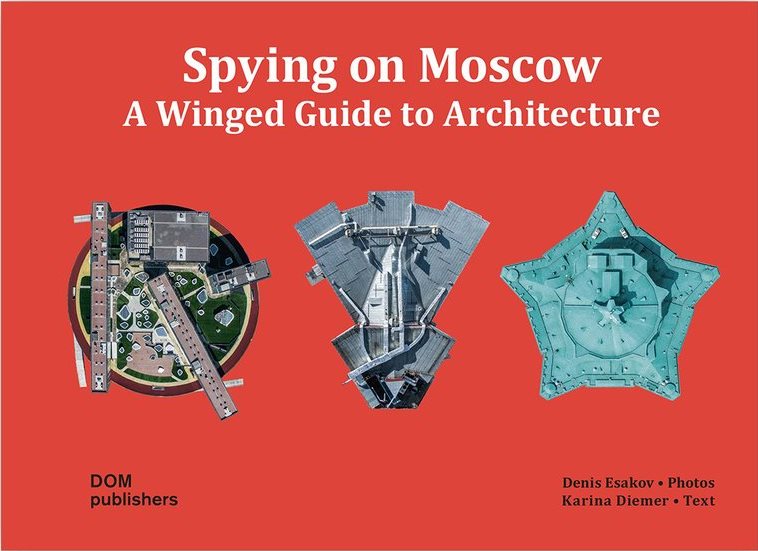Press information
 | Denis Esakov (photos) / Karina Diemer (text) Spying on Moscow A winged Guide to Architecture 150 x 210 mm, 336 pages 230 pictures, hardcover ISBN 978-3-86922-501-2 (German / English / Russian) EUR 28.00 May 2017. DOM publishers, Berlin |
New from DOM publishers:
Denis Esakov (photos) / Karina Diemer (text)
Spying on Moscow
A winged Guide to Architecture
A pedestrian in the city sees buildings in the context of the city landscape, with the façades as main attraction. Architects and engineers are focused on construction and design, and urbanists consider individual buildings solely as elements of the city complex. Thus the angle of observation influences the reception of the objects: viewing from above, onto the "fifth façade" that barely anyone sees, opens completely different dimensions.
The Moscow photographer, Denis Esakov, has captured the fifth façades of Europe's largest metropolis with a remote-controlled drone: roofs, domes, towering building cubes. In this small bibliographic picture book Spying on Moscow: A Winged Guide To Architecture, the photographer portrays over seventy architecturally important objects from the past hundred years. This is the first book ever to use photos taken from a drone, flying over Moskow. Denis Esakov tells a short story about each building with three pictures; two are taken from above and the third is taken from the perspective of an observer at ground-level. Thus composing a three-dimensional overall impression, enabling to see the sights of the city with a new point of view – just like looking at an architect's model. Such a view helps to develop perception and captures the essence of the building from three angles. The hyperbolic construction of the Shukhov Radiotower (1922) reminds us of a bird's nest; the former residential Government Building (1928-1931) by Boris Iofan reveals a complex composition with different volumes and courtyards; the Red Army Theatre (1934-1940) – that should be recognisable from above – develops into the emblematic five-pointed star.
This type of photography offers a new city reception or shows the glitches in urban space. It reveals how a building integrates into the cityscape or organises it. Although the photographs have a documentary character, they convey the impression of flying over the city. By gazing through the drone’s eye, the artist fosters a novel visual aesthetic that opens up new vistas, even for Moscow connoisseurs.
 |  |  | ||
| Photos: Denis Esakov | ||||
| View all press images |
Downloads and links:
» PDF press release
» Cover 2D
» Cover 3D
» Press images
» To the publisher



